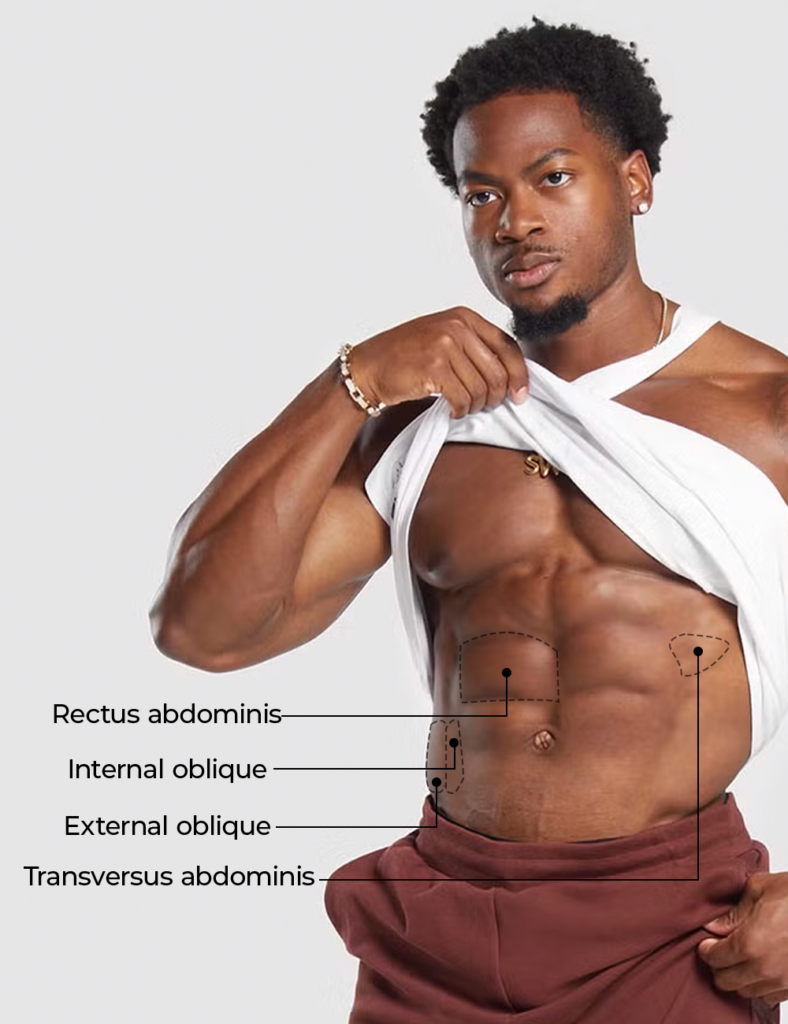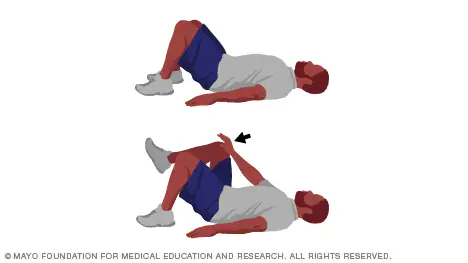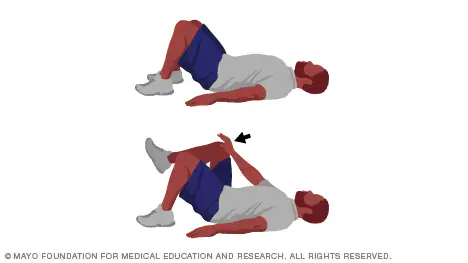
A chiseled core with well-defined ab muscles is the pinnacle of an athletic physique.
But there’s more to abs than meets the eye – these small, powerful muscles are there to help during almost all exercises, whether you’re looking to pull a heavier deadlift, knock time off your 5K, or perfect your posture.
If you’re serious about carving your core to look built in a muscle-fit shirt or toned in a crop top, it’s going to take more than some heavy barbell lifts to get there. We’re talking about focused core training: From crunches and leg raises to rotational exercises, along with the right nutrition.
Discover our go-to core exercises, along with expert advice on training frequency and a note on nutrition for fat loss. Brace yourself, these are the ultimate ab-building exercises.
Exercises to improve your core strength
Core-strength exercises strengthen the core muscles. Core muscles include the abdominal muscles, back muscles and the muscles around the pelvis. Strong core muscles make it easier to do many physical activities.
You can do core-strength exercises on a carpeted floor or mat. Breathe freely and deeply during each core-strength exercise. Focus on tightening the deepest abdominal muscle and the one you feel contracting when you cough, also called the transversus abdominis.

Stretching and core workouts play a crucial role in strengthening stomach muscles. This guide highlights effective stretches and beginner-friendly core exercises like planks, crunches, and bicycle crunches. With consistency and the right approach, anyone can build a strong core and improve flexibility, leading to better overall fitness.
Introduction
Stretching and core workouts are vital for improving flexibility, enhancing posture, and strengthening the stomach muscles. For beginners, it can be overwhelming to know where to start, but with consistency and the right exercises, anyone can see results. This guide will help you build a strong foundation with stretching and core exercises designed specifically to target your abdominal muscles and promote overall body health.
Why Stretching is Important for Core Strength
Stretching is often overlooked, but it plays a crucial role in preventing injuries and improving the effectiveness of your workouts. Before diving into core exercises, warming up with stretching allows your muscles to become more pliable and ready for the strain. It increases circulation, reduces muscle stiffness, and enhances range of motion.
Core strength is essential for maintaining good posture, stabilizing the body during daily activities, and performing more advanced exercises. Stretching helps improve flexibility, which supports core workouts by allowing you to move freely and efficiently through various movements.
Types of Stretching for Core Workouts
Dynamic Stretching
Dynamic stretches involve movement and are best for warming up before any workout. They help to increase blood flow and activate the muscles you’ll be using during your core workout.
- Leg Swings: Stand tall and swing one leg forward and backward, keeping your torso steady. Perform 10–15 swings on each leg.
- Torso Twists: Stand with your feet shoulder-width apart and rotate your torso from left to right. This will warm up your spine and engage your abs.
Static Stretching
Static stretching is performed after a workout to help muscles relax and lengthen. It should not be done before intense exercise but can be highly beneficial for flexibility.
- Child’s Pose: Sit on your knees and reach your arms forward, lowering your chest toward the floor. This stretch targets the back and abdominals, promoting relaxation.
- Cobra Stretch: Lie flat on your stomach, and press your palms into the floor to lift your upper body. This targets the abdominal muscles and enhances flexibility in the lower back.
- Core Workouts for Beginners
- Building a strong core involves exercises that engage your abdominal muscles, lower back, and pelvic region. These exercises will help you develop balance, stability, and strength in your stomach muscles.
- Plank
- The plank is one of the most effective exercises for core strength. It activates your entire core, engaging the abdominal, lower back, and glute muscles.
- How to do it: Start in a push-up position, keeping your arms directly beneath your shoulders. Hold your body in a straight line from your head to your heels, and engage your core. Try to hold for 30–60 seconds, depending on your ability.
- Crunches
- Crunches are a classic core exercise that targets the upper abdominal muscles.
- How to do it: Lie on your back with your knees bent and feet flat on the floor. Place your hands behind your head or cross them over your chest. Lift your shoulders off the ground while engaging your core, and then lower back
- down. Repeat for 12–15 reps.
- Bicycle Crunches
- This exercise works both the upper and lower abs, as well as the obliques (the muscles along the sides of your abdomen).
- How to do it: Lie on your back with your knees bent and hands behind your head. Bring your right elbow towards your left knee while straightening your right leg. Switch sides and repeat, mimicking a bicycle pedaling motion. Perform 15–20 reps on each side.
- Leg Raises
- Leg raises focus on the lower abdominal muscles, which can be challenging but are essential for core strength.
- How to do it: Lie on your back with your hands under your hips. Keep your legs straight and lift them up towards the ceiling, lowering them back down slowly without letting them touch the floor. Perform 10–12 reps.
- Mountain Climbers
- Mountain climbers are a dynamic exercise that increases heart rate while targeting the core and legs.
- How to do it: Start in a push-up position, keeping your hands under your shoulders. Alternate bringing each knee towards your chest in a running motion, keeping your core engaged throughout the movement. Perform for 30 seconds to 1 minute.
- Tips for Success
- Consistency is Key: Stick to a regular workout routine and gradually increase the intensity of your exercises.
- Engage Your Core: Always remember to keep your core muscles engaged during workouts to maximize effectiveness.
- Focus on Form: Proper form is essential to avoid injury and get the most out of your exercises.
- Rest and Recovery: Don’t forget to take rest days for muscle recovery and avoid overworking your core.
- Conclusion
- Stretching and core workouts are fundamental components of any fitness routine. As a beginner, focusing on the right stretching techniques and core exercises can help you develop a strong, stable, and functional core. With regular practice and patience, you’ll notice improvements in your abdominal strength, posture, and overall fitness level. Remember to warm up
- properly, maintain proper form, and be consistent with your routine for the best results
- Q&A Section
- Q1:- What are core workouts and why are they important?
- Ans:- Core workouts focus on strengthening the muscles in your abdomen, lower back, and pelvis. A strong core improves posture, stability, balance, and can reduce the risk of injuries.
- Q2:- What are the best stretches for a beginner to start with?
- Ans:- Some effective stretches for beginners include the cat-cow stretch, child’s pose, and seated forward fold. These stretches improve flexibility and prepare your muscles for core exercises.
- Q3:- How do I know if I’m doing a core exercise correctly?
- Ans:- You should feel the muscles in your stomach, back, and sides working, but avoid straining your neck or lower back. If you feel discomfort in your joints or experience pain, it may indicate improper form.
- Q4:- How often should I do core workouts as a beginner?
- Ans:- Start with 2-3 core workouts per week. Allow at least one rest day between sessions for muscle recovery and growth.
- Q5:- Can core exercises help flatten my stomach?
- Ans:- While core exercises tone and strengthen your muscles, losing belly fat requires a combination of cardio, strength
- strength training, and a healthy diet.
- Q6:- What are the best beginner core exercises to try?
- Ans:- Some great beginner exercises include planks, bicycle crunches, leg raises, and bridges. These exercises target the core muscles effectively.
- Q7:- How can stretching help with core workouts?
- Ans:- Stretching before a workout warms up your muscles, reducing the risk of injury. Stretching afterward can improve flexibility and aid in muscle recovery.
- Q8:- How long should I hold each stretch?
- Ans:- Hold each stretch for about 20-30 seconds, and repeat 2-3 times to improve flexibility and lengthen your muscles.
- Q9:- What is a plank, and how do I do it correctly?
- Ans:- A plank is a simple core exercise where you hold a push-up position on your elbows and toes, keeping your body in a straight line. Engage your core and avoid letting your hips sag.
- Q10:- How can I strengthen my lower stomach muscles?
- Ans:- Leg raises, reverse crunches, and mountain climbers are great exercises to target your lower stomach muscles.
- Q11:- Are there any core exercises that also work my obliques?
- Ans:- Yes, side planks, Russian twists, and standing side crunches target the oblique muscles on your sides.
- Q12:- How do I avoid straining my neck during core exercises?
- Ans:- Keep your neck in a neutral position by looking straight ahead or slightly down while performing exercises like crunches. Avoid pulling your head with your hands.
- Q13:- Can stretching prevent muscle soreness after a workout?
- Ans:- Stretching can help reduce muscle stiffness and soreness by promoting blood flow to the muscles and improving flexibility.
- Q14:- What is the benefit of doing a pelvic tilt in core workouts?
- Ans:- A pelvic tilt helps activate your lower abdominal muscles and strengthens the pelvic floor, reducing lower back pain and improving posture.
- Q15:- How do I know if I’m overworking my core muscles?
- Ans:- If you feel sharp pain, extreme fatigue, or soreness that lasts for days, you may be overworking your core. Give your muscles time to recover between workouts.
- Q16:- Should I breathe while doing core exercises?
- Ans:- Yes, remember to breathe deeply during core exercises. Exhale during the effort (e.g., when lifting or contracting) and
- inhale during the return movement.
- Q17:- What’s the difference between dynamic and static core exercises?
- Ans:- Dynamic core exercises, like bicycle crunches, involve movement and target multiple core muscles. Static core exercises, like planks, involve holding a position to build endurance and strength.
- Q18:- Can core workouts help with back pain?
- Ans:- Yes, strengthening your core can relieve back pain by improving posture, stabilizing the spine, and reducing pressure on your back muscles.
- Q19:- How long should I hold a plank to see results?
- Ans:- Aim to hold a plank for 30 seconds to 1 minute. Gradually increase the duration as you build strength.
- Q20:- What is the importance of rest and recovery for core muscles?
- Ans:- Rest is essential to allow your muscles to repair and grow stronger. Overworking the core without rest can lead to muscle fatigue and injury.
